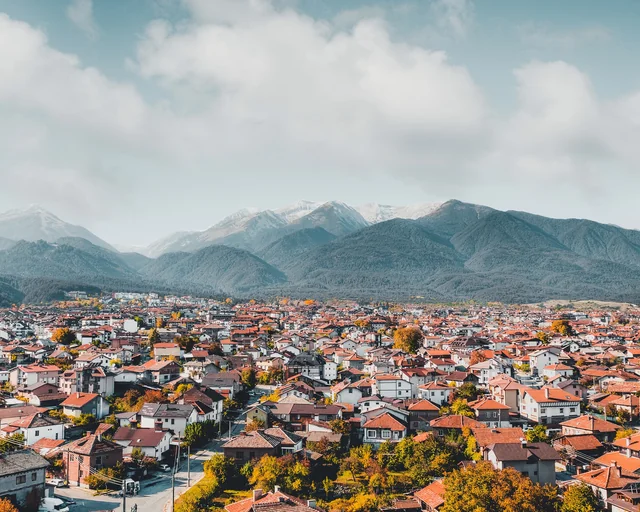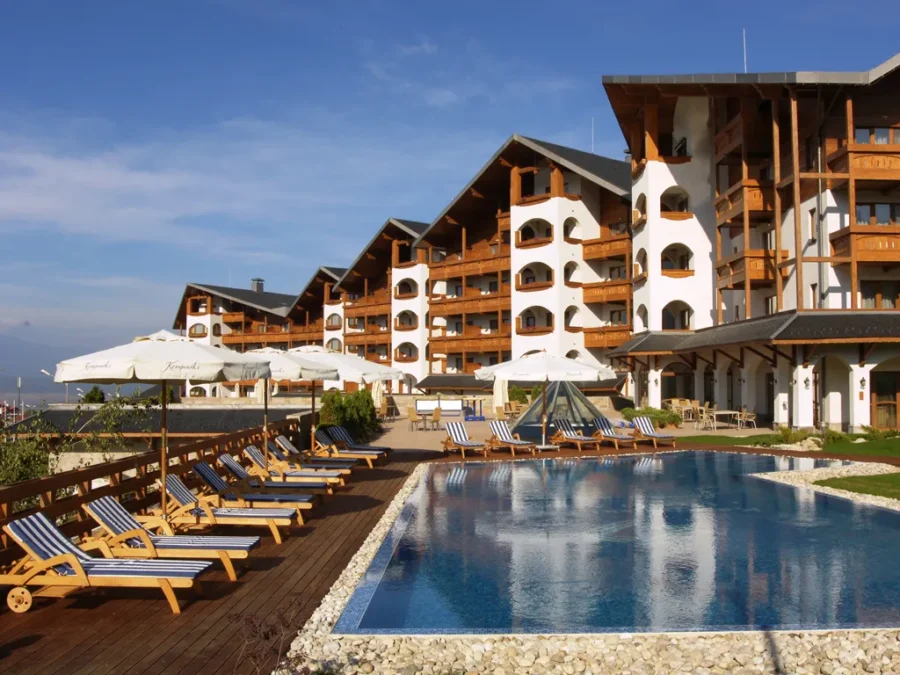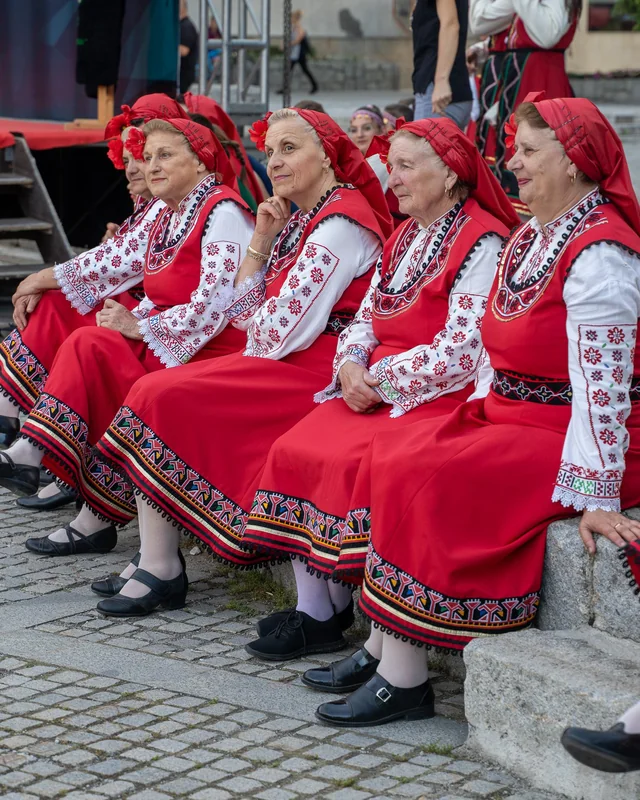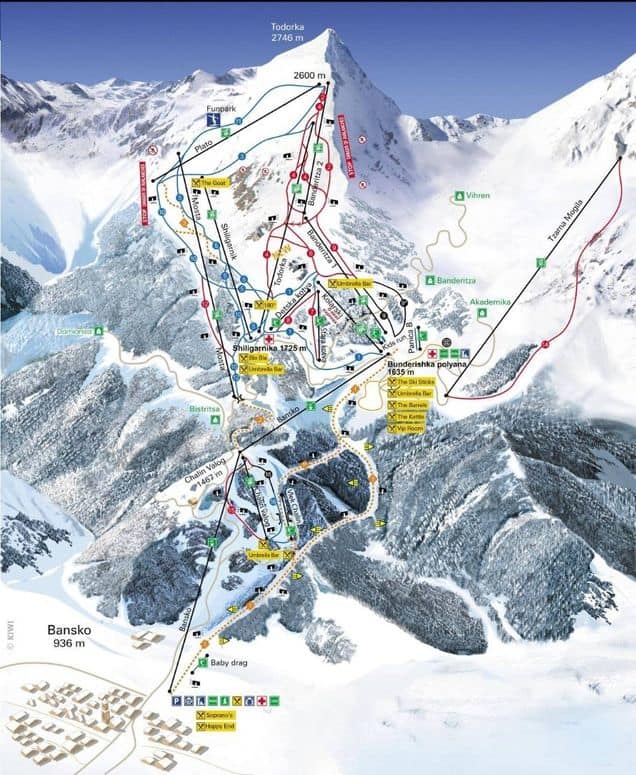Looking for a destination that offers the best of both adventure and culture, all at affordable prices? Bansko Europe, might just be the perfect spot for you. Nestled in the Pirin Mountains of Bulgaria, Bansko has rapidly evolved into a year-round destination, offering world-class skiing in the winter, hiking and mountain biking in the summer, and a charming town rich with history. In this guide, we’ll take a deep dive into everything Bansko has to offer, including its outdoor activities, cultural experiences, dining options, accommodation, and travel tips.

Why Visit Bansko?
Bansko combines the thrill of adventure sports with the charm of a traditional European town. Its ski slopes and hiking trails attract thrill-seekers, while its old town offers a glimpse into Bulgaria’s past. Whether you want to carve down the mountain on a snowboard, hike through the Pirin National Park, or enjoy a traditional Bulgarian meal at a local tavern (known as a mehana), Bansko is a diverse destination that suits all types of travelers.
What truly sets Bansko apart is its affordability. Compared to other European resorts, it offers the same quality of experiences without the hefty price tag, making it a perfect option for budget-conscious travelers.
Bansko as a Year-Round Destination
Winter in Bansko: Skiing and Snowboarding
Bansko, Europe is best known for its skiing and snowboarding scene. The ski resort boasts more than 75 kilometers of ski runs, with modern facilities that rival the more expensive resorts in the Alps. The season typically runs from December through April, with ample snowfall and well-maintained slopes. The resort has options for everyone, from beginner slopes to advanced black runs, ensuring that skiers of all levels will find something that suits them.
- Best Runs: The Todorka peak area has the longest runs, and its advanced slopes are perfect for experienced skiers. For beginners, the Chalin Valog offers gentler gradients, while Bunderishka Poliana is ideal for intermediates.
- Ski Passes: One of Bansko’s biggest draws is the affordability of its ski passes. You can purchase multi-day passes at far lower prices than in Western European ski resorts, making it a great destination for long-term travelers or families on vacation.
- Off-Piste and Freestyle: Bansko is also known for its off-piste skiing and snowboarding. There are freeride zones and even a snow park with jumps, rails, and boxes, perfect for those looking for a freestyle experience.

Summer in Bansko: Hiking, Biking, and Nature
During the warmer months, Bansko transforms into a summer paradise. Hiking and mountain biking in the Pirin Mountains are among the top activities, with scenic trails leading through pine forests, up rocky peaks, and past glacial lakes.
- Pirin National Park: A UNESCO World Heritage site, this park is home to over 70 glacial lakes and towering peaks like Vihren, which stands at 2,914 meters. Trails range from easy day hikes to challenging multi-day treks.
- Mountain Biking: Bansko has gained popularity among mountain bikers due to its well-marked trails and scenic routes. Whether you’re looking for a leisurely ride through the forest or a more challenging downhill experience, the Pirin Mountains offer a variety of trails.
- Rock Climbing and Adventure Sports: For adrenaline junkies, the region offers plenty of outdoor adventure options, including rock climbing, paragliding, and canyoning. You can book guided tours or rent equipment from local adventure companies in town.

Cultural Experiences in Bansko
Beyond outdoor activities, Bansko offers a rich cultural experience. The town’s historic old quarter has preserved its traditional charm, with cobblestone streets, stone houses, and churches dating back centuries.
- Bansko Old Town: A stroll through Bansko Old Town will take you past traditional Bulgarian houses and mehanas, where you can enjoy local dishes like kavarma or banitsa. Make sure to visit the Neofit Rilski Museum, dedicated to the Bulgarian scholar who played a key role in the country’s national awakening.
- Church of the Holy Trinity: One of the most iconic landmarks in Bansko, this 19th-century Orthodox church is known for its beautiful frescoes and intricate wood carvings. It serves as a central hub for the town’s spiritual and cultural life.
- Festivals in Bansko: The town is also known for its vibrant festivals, including the Bansko Jazz Festival, which attracts international musicians every August, and the Bansko Film Fest, which celebrates outdoor and adventure films. These events bring a lively atmosphere to the town, making it a great time to visit for culture lovers.

Dining and Nightlife in Bansko
One of the highlights of visiting Bansko is the local cuisine, which combines rich Bulgarian flavors with hearty portions. The town is dotted with mehanas, traditional taverns that serve dishes like shishcheta (grilled meat skewers) and shopska salad (a fresh mix of tomatoes, cucumbers, and feta cheese).
- Top Mehanas: Mehana Dedo Tase and Kancheto are two of the most popular places to experience authentic Bulgarian food. Expect to be greeted by live folk music, roaring fireplaces, and warm hospitality.
- Modern Dining: While Bansko is steeped in tradition, it also caters to modern tastes. You’ll find contemporary restaurants serving international cuisine, including Italian, Mediterranean, and Asian dishes. Leonardo is a great spot for fine dining, offering everything from gourmet pizzas to seafood dishes.
- Nightlife: After a day on the slopes or the trails, Bansko’s nightlife scene heats up. The town is home to several bars and clubs, including the popular Happy End and Jack’s House, where tourists and locals alike gather to enjoy live music, dancing, and drinks.

Where to Stay in Bansko
Bansko offers a wide range of accommodation options to suit every traveler’s needs and budget. Whether you’re looking for a luxury experience, a family-friendly hotel, or a cozy guesthouse, the town has it all.
- Luxury Hotels: If you’re looking for high-end accommodation, the Kempinski Hotel Grand Arena offers five-star service, a spa, and unbeatable views of the slopes. Another top choice is the Premier Luxury Mountain Resort, which provides top-notch amenities, including gourmet restaurants and heated pools.
- Budget-Friendly Stays: For budget-conscious travelers, Pirin Lodge and Hotel Avalon are great choices. They offer comfortable rooms and easy access to both the ski lifts and hiking trails.
- Apartments and Chalets: If you’re traveling with family or a group, renting an apartment or chalet can provide a more flexible and cost-effective option. Platforms like Airbnb and Booking.com offer plenty of rentals, from cozy mountain cabins to modern apartments.

Getting to Bansko
Getting to Bansko, Europe, is fairly easy, with multiple transportation options available. The town is located roughly 160 km from Sofia, Bulgaria’s capital, which is the main entry point for most international travelers.
- By Car: Renting a car from Sofia Airport is the most convenient option, allowing you to make the two-hour drive to Bansko at your own pace. The route takes you through beautiful countryside and is straightforward, though snow chains may be required in winter.
- By Shuttle: Numerous companies offer shuttle services from Sofia to Bansko, which is an affordable and hassle-free option. These shuttles can be pre-booked online and typically operate year-round.
- By Train or Bus: While slower, taking the train or bus is another way to reach Bansko. Buses depart regularly from Sofia’s central bus station, with travel times around three hours. Trains offer a more scenic route but involve a longer journey, making them ideal for those looking to enjoy the scenery.
Final Tips for Visiting Bansko, Europe
- Currency: Bulgaria uses the Bulgarian Lev (BGN), so be sure to exchange currency or withdraw from ATMs in town. Credit cards are widely accepted in hotels and larger restaurants but always carry some cash for smaller establishments.
- Weather: Winters are cold and snowy, perfect for skiing, while summers are mild, ideal for outdoor activities like hiking. Be sure to pack appropriately for your chosen season.
- Language: While Bulgarian is the official language, English is widely spoken, especially in tourist areas like Bansko. Learning a few basic Bulgarian phrases can still enhance your experience.
Conclusion
Bansko Europe is the perfect mix of adventure, culture, and affordability. Whether you’re carving down the mountain in winter, hiking the Pirin Mountains in summer, or simply soaking up the town’s rich history, Bansko offers something for every traveler. Its blend of traditional charm and modern amenities makes it an ideal destination for anyone looking to escape the crowded tourist spots of Europe and discover something truly special. So, whether you’re a ski enthusiast, nature lover, or culture seeker, it’s time to pack your bags and explore Bansko—Europe’s best-kept secret!